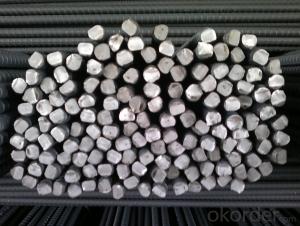Rebar, also known as reinforcement bars, is the unsung hero of the construction world. These steel bars are embedded in concrete to provide structural integrity and support. Imagine a building without rebar; it would be like a cake without flour – it just wouldn’t hold up. But what exactly is the role of rebar in structural integrity? Let’s dive into the world of construction and explore the answer.
The Backbone of Buildings
Rebar acts as the backbone of buildings, providing strength and stability. It’s the steel skeleton that gives concrete its shape and form. Without rebar, concrete would be weak and prone to cracking or breaking under pressure. Rebar is like the muscle of the construction world, flexing its strength to keep buildings standing tall.
The Science Behind Rebar and Concrete
The combination of rebar and concrete is a match made in engineering heaven. Steel and concrete have different properties that complement each other perfectly. Steel is strong and ductile, meaning it can stretch without breaking, while concrete is hard and brittle, meaning it can crack under pressure. When they’re combined, they create a material that is both strong and flexible, capable of withstanding the test of time.
The Bonding Process
The bonding process between rebar and concrete is crucial for structural integrity. The rebar is embedded in the concrete, and as the concrete cures, it forms a tight bond with the steel. This bond ensures that the two materials work together to distribute loads and resist deformation. It’s like a team of superheroes, each with their own unique powers, working together to save the day.
Types of Rebar and Their Uses
There are various types of rebar, each with its own specific use. Deformed rebar is the most common type, featuring ridges that help it bond better with the concrete. Smooth rebar is used for applications where a stronger bond isn’t necessary, like in walls or slabs. There’s also epoxy-coated rebar, which is used in environments where corrosion is a concern, like near the ocean. Each type of rebar plays a vital role in ensuring the structural integrity of a building.
The Importance of Proper Placement
Proper placement of rebar is essential for the structural integrity of a building. Rebar must be positioned correctly to ensure that it provides the necessary support and strength. If rebar is placed too close to the surface of the concrete, it can lead to corrosion and a weakened structure. On the other hand, if it’s placed too deep, it may not provide the necessary support. It’s all about finding the right balance.
The Role of Rebar in Earthquake-Proofing Buildings
Rebar plays a crucial role in earthquake-proofing buildings. During an earthquake, buildings are subjected to intense shaking and stress. Rebar helps to distribute these forces evenly throughout the structure, preventing it from collapsing. It’s like a safety net, catching the building before it falls.
The Future of Rebar and Structural Integrity
As technology advances, so does the role of rebar in structural integrity. New materials and techniques are being developed to improve the strength and durability of rebar. For example, some researchers are exploring the use of high-strength steel alloys to create rebar that is even more robust. The future of rebar looks bright, with endless possibilities for innovation and improvement.
In conclusion, rebar is a vital component in the construction of buildings, providing structural integrity and support. It’s the unsung hero that keeps our buildings standing tall and safe. The science behind rebar and concrete, the bonding process, the various types of rebar, proper placement, and its role in earthquake-proofing buildings all contribute to the strength and stability of our structures. As we look to the future, we can expect to see even more advancements in rebar technology, ensuring that our buildings remain strong and secure for generations to come.

